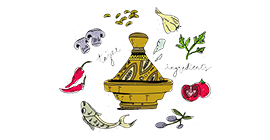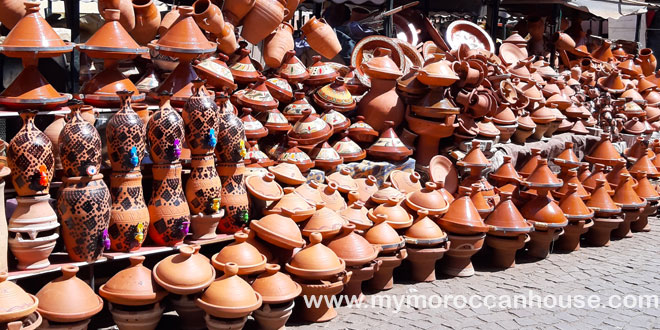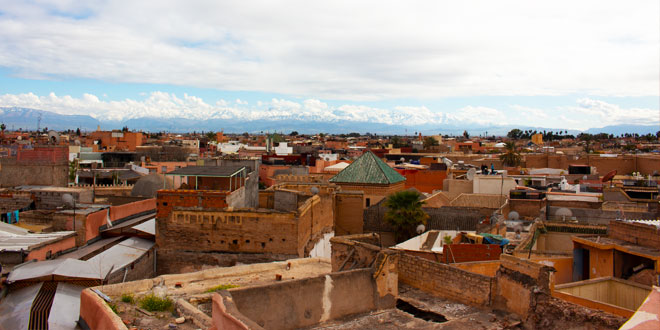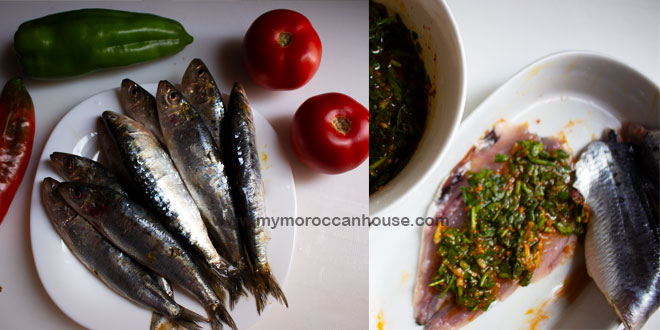You have reached this interesting post as you might be among those who have asked the following questions: How Big Is the Medina in Marrakech? What is the medina of Marrakech known for? How old is the old medina in Marrakech? What is the difference between a medina and a souk? What is the center of Marrakech called? How many souks are there in Marrakech? if so, you have come to the right place.
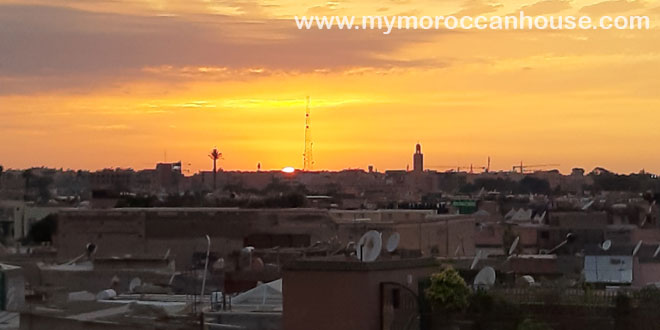
How Big Is the Medina in Marrakech?
Marrakech is such an important city that it gave its name to Morocco. The Medina of Marrakech was classified as a world heritage of humanity by Unesco in 1985.
Marrakech is one of Morocco’s former imperial capitals. Its ochre buildings and medieval sights make it a unique tourist destination, but the city is also quite modern and chic.
The Medina of Marrakech is an ancient Islamic capital originating in the 11th century. It was founded in 1062 by Almoravids.
Marrakech is surrounded by 16 km of ramparts and gates and is extending over a total area of 600 hectares, it is one of the largest medinas in Morocco and one of the most populated in North Africa.
What Is the Difference Between a Medina and A Souk?
By definition, a Souk, in Arabic, is a temporary outdoor market. It is either food (vegetables, spices, seeds, meat, etc.), clothing (djellaba, fabrics, woolen blankets, etc.), products (animals, bicycles, furniture, etc.), crafts (wood, iron, leather, etc.) or simply mixed market. Inside the city, souks can be permanent, it can also be covered.
The Souk of Marrakech is located north of Jemaa El Fna Square, inside the medina. It extends to the Medersa Ben Youssef. With a length of about 500 meters, there are 2600 artisans.
The most famous are the souks of Leather, Copper & Spices, Carpets, Jewelry, or the Souk of Slippers. But there are many others that all have their own charm and they are all worth the visit. There are 18 souks in Marrakech .
How Many Souks Are There in Marrakech?
The 18 Souks of Marrakech are as follows:
- Souk Ablouh: souk of olives and candied fruits
- Attarine souk: spice and brassware souk
- souk Cherratine: leather souk
- souk Chouari: basketwork and wood souk
- Dhabia souk: jewelry souk
- Souk El Khemis: flea market (north of the medina, outside the central zone)
- El Kebir souk: leather goods souk
- Fekharine souk: potters’ souk
- souk Haddadine: souk of blacksmiths and ironworkers
- Joutia-Zrabi or Zarbia souk: carpet souk
- Kassabine or Quessabine souk: clothing souk
- Kimakhine souk: musical instruments souk
- Souk Nejjarine: souk of carpenters
- souk Laghzal: wool souk
- Sebbaghine souk: Souk of the dyers
- Seffarine souk: brass souk
- souk Semmarine: souk of pastries and fabrics
- Serrajine souk: saddlers souk
- souk Smata: slippers souk
What Is the Medina of Marrakech Known For?
The rich history of Marrakech is echoed in its various souks and quarters. The medina, above which rises the minaret of the Koutoubia Mosque, the symbol of the red city, corresponds to the old town.
Place Jemaa el Fna, the hub of all activity is its heart. Within the ramparts are the souks (north of Place Jemaa el-Fna), the kasbah, and the mellah which means the Jewish quarter.
Guéliz, in the northwest, is the new town. It is filled with Western-style offices, businesses, and residential areas. Avenue Mohammed V is the district’s main thoroughfare.
Extending Guéliz in the southwest is Hivernage, a green quarter with many hotels. The neighborhood is bordered on its western side by the Menara Gardens, and on its eastern side by the walls of the medina.
The only way to explore the souks and the medina is on foot. The ramparts and most other features of interest to visitors can be reached by car. A very pleasant and affordable way of traveling around the city is by yellow petit taxi or horse-drawn carriage.
It is wise to agree in advance on the fare for your journey. Petits taxis and carriages can be hired mainly in Guéliz (on Avenue Mohammed V, near the central market and the large hotels) and around Place Jemaa el-Fna, near the central police station.
Why Is Marrakech a Beautiful City?
Marrakech is considered the first tourist city in Morocco. It has been able to attract tourists thanks to the legendary hospitality of Marrakechi people, the flavor of local cuisine, and the more affordable cost of living compared to that of other destinations.
In Marrakech, tourists will never get bored. They can get lost in the souks of the medina and buy spices, copper objects, gold jewelry, leather bags, carpets, tajine dishes, Moroccan pastries, etc. The camel ride is also to be done especially at the end of the afternoon. This is the best way to admire the beauty of the sunset in Marrakech.
The Walls of Marrakech
The rampart of Marrakech is a length of 16 km with a variable height between 6 and 9m, while its thickness varies between 1.60 m and 2m. It is reinforced by oval towers and pierced by huge gates, the most imposing of which are Bab Doukala, Bab Aghmat, Bab Aylane, and Bab Agnaou.
The Gates (Bab Doukkala, Bab Aghmat)
Marrakech is surrounded by big ramparts. The walls are five meters high and two meters thick. they extend over a length of approximately 16 km. The walls were built by the Almoravid Ali Ben Youssef in 1126-1127.
Bab Doukkala
This door of Almoravid origin, owes its name to the homonymous territory, inhabited by Almohad populations.
Bab Aghmat
City gate opening in one of the bastions defending it.
Badia Palace
This great palace was built during the last quarter of the 16th century by the Saadian sultan Ahmed al Mansour (1578-1603) to commemorate his victory over the Portuguese army in 1578.
To build the palace el Badiâ which means the incomparable, the Saadian sovereign had chosen the northeast corner of the kasbah. The Basiâ was intended for celebrations and solemn audiences during which the sovereign could show his splendor. The palatial complex consists of a large courtyard in the shape of a rectangle of 135 mon110 m, in the middle of which a basin of 90 m on 20 m.
Koubba Almoravide
Unique architectural witness of the Almoravid era in Marrakech, the kubba was excavated around 1948 thanks to archaeological excavations. It is located in the Ben Youssef district near the mosque that bears the same name.
La Koubba Almoravide is a small architectural complex intended for ablutions. This monument is in the form of a sumptuous dome surrounded by the remains of small cells that served as latrines.
The dome is built above a rectangular basin. The interior of the dome is decorated with splendid decoration whose themes are epigraphy and floral arabesque.
Saadian Tombs
The royal graveyard of the Saadian family was created after the burial of Prince Mohamed Cheikh in 1557. His son, who had raised a koubba, was buried there in 1574.
This building is known as the koubba lalla mesaouda. Ahmed El Mansour buried his mother there in 1591 as well as his three successors. This set consists of several funeral rooms among them we find la Koubba of Lalla Mesaouda, the second building is the central room known as the room of the twelve columns which houses the tomb of Sultan Ahmed El Mansour, the room of the mihrab and the room of the three niches, another room houses the tombs of children.
The entire monument is pleasantly decorated with great finesse in execution.
Mouassine Fountain
This public fountain is the largest of all the fountains in Marrakech. It is part of the “Mouassine” complex which includes a mosque, a library, a hammam, a medersa and the Mouassine fountain.
The latter was built in the Saadian period under the order of Sultan Abdellah al Ghâlib between 1562 and 1563. It has a beautiful architectural composition and includes three large troughs covered with vaults and open to the street by three arcades.
The Koutoubia Mosque
It is the most famous religious monument in Marrakech. This mosque of great architectural allure and decorative richness has a complex history. It is actually a double sanctuary with a minaret.
The first Koutoubia was inaugurated in 1157 and the second and the minaret were built a year later in 1158 JC by order of Abdelmoumen. The two sanctuaries are distinguished by their innovative plan which gives great importance to the wall of the qibla. Indeed this enhancement can be seen by the T-shaped plan drawn by the overlap between the two main naves of the prayer hall which are the axial nave and the longitudinal nave.
What highlights this monument is its gigantic minaret which constitutes one of the marvels of art and architecture in Islam. Built in cut stone, it has a ramp inside which gives access to rooms covered with domes as well as to its summit. Its height is 77 m. It features decorative registers on upper facades made of green and white ceramic tiles.
Medersa Ben Youssef
The medersa ben Youssef is one of the most important historical monuments in Marrakech. It is also one of the largest medersas in the Maghreb. It was raised by the Saadian Abd Allah al Ghalib in 1564-1565, and attested by inscriptions on the capitals of the prayer room and on the lintel of the entrance door.
The medersa has a quadrilateral plan with an area of 1680 m2, it includes a prayer room and rooms for 130 students. Overall the medersa is a true reflection of the magnificence of Saadian art.
Place Jamaa El Fna
It is a significant example of the wealth of performing arts in Morocco. Famous worldwide, this place has always been the point of attraction to visitors of the city of Marrakech. It is a space for shows and leisure activities that followed one another until late in the evening.
The square constantly attracts crowds of visitors from all over the world to watch performances by snake charmers, monkey trainers, storytellers, musicians, and other popular entertainers. The power of these original spectacular activities pleaded in favor of the registration of this place by UNESCO in 2001 as a World Oral Heritage, the first of its kind on a global scale.
Bahia Palace
The palace of la Bahia is a large old residence and a group of houses were brought together and converted into a palace at the end of the 19th century by the Moroccan architect El Mekki on behalf of the grand vizier Ahmed ben Moussa known as Ba Hmad (1841-1900).
The best workers and craftsmen in the country worked there without interruption for six years (1894-1900).
What Is so Special About Morocco? Reasons Why You Should Visit Morocco
Morocco is a land of glamorous and vivid contrasts. The gateway to two continents, it is a country of breathtaking landscapes, rich in history and heady with magnific scents and spectacular sights.
While the countryside is home to old traditions and diverse peoples, the ever-growing urban centers boast incredible new architecture together with the old, and activities to suit all modern tastes.
Morocco’s diverse geography, multicultural atmosphere, and rich history make it a mesmerizing country.
Its towns offer a striking contrast of ancient kasbahs, mosques and souks and modern architecture, with a
mix of Berber, Arab and African peoples.
In the crowded ancient medinas, young men in designer jeans haggle over cell phones alongside traditionally dressed women shopping for housewares.
In the fertile countryside, a farmer riding on a goat is as common a sight as a television satellite perched on a mud-brick roof.
Moroccan culture is extremely rich and difficult to pigeonhole. Moroccan landscape includes beaches, mountains, lakes, forests, and deserts.
Morocco is a unique blend of Arab, African, and European ways of life, and the Moroccans wouldn’t have it any other way.
Moroccan cuisine is rich and varied, owing to a variety of cultural influences. Meat is well-spiced and lean, vegetables are fresh and abundant, and everything is permeated with spices.
Moroccan cooking is quite labor-intensive and dishes are pleasingly presented as well as meticulously prepared.
Beef, lamb, fish, and chicken are all popular and used in a variety of dishes. Pigeon and turkey are also available, and the seafood in the coastal cities is not to be missed.
Meat is prepared according to Islamic halal regulations.
Rice, semolina wheat, and barley grains are used for a variety of dishes. A wide range of spices is used, including cumin, saffron, paprika, ginger, cinnamon, red and black pepper, and a special mixture called ras al-hanout is widely used in Moroccan cuisine.
A typical Moroccan meal starts with something fresh or cooked salads, olives and pickled vegetables and bread, and sometimes a cold beverage. The main course is then brought out, usually in a large pot, or tajine.
Moroccans will either eat from the main dish their hands or using spoons, or serve food on to individual dishes.
After the main course is through and plates are removed, various fruits are arranged on the table, and mint tea is served, sometimes with Moroccan cookies.
